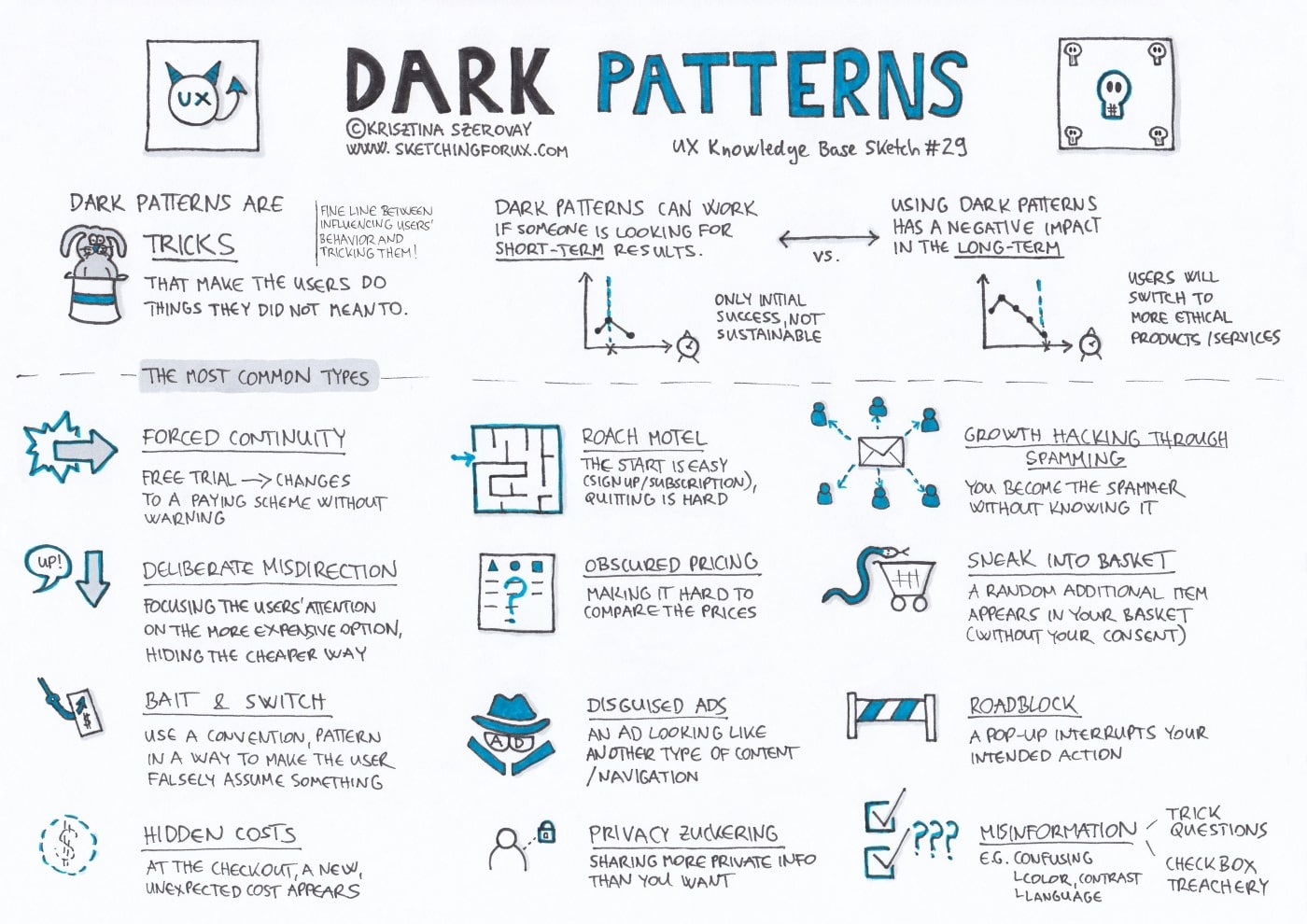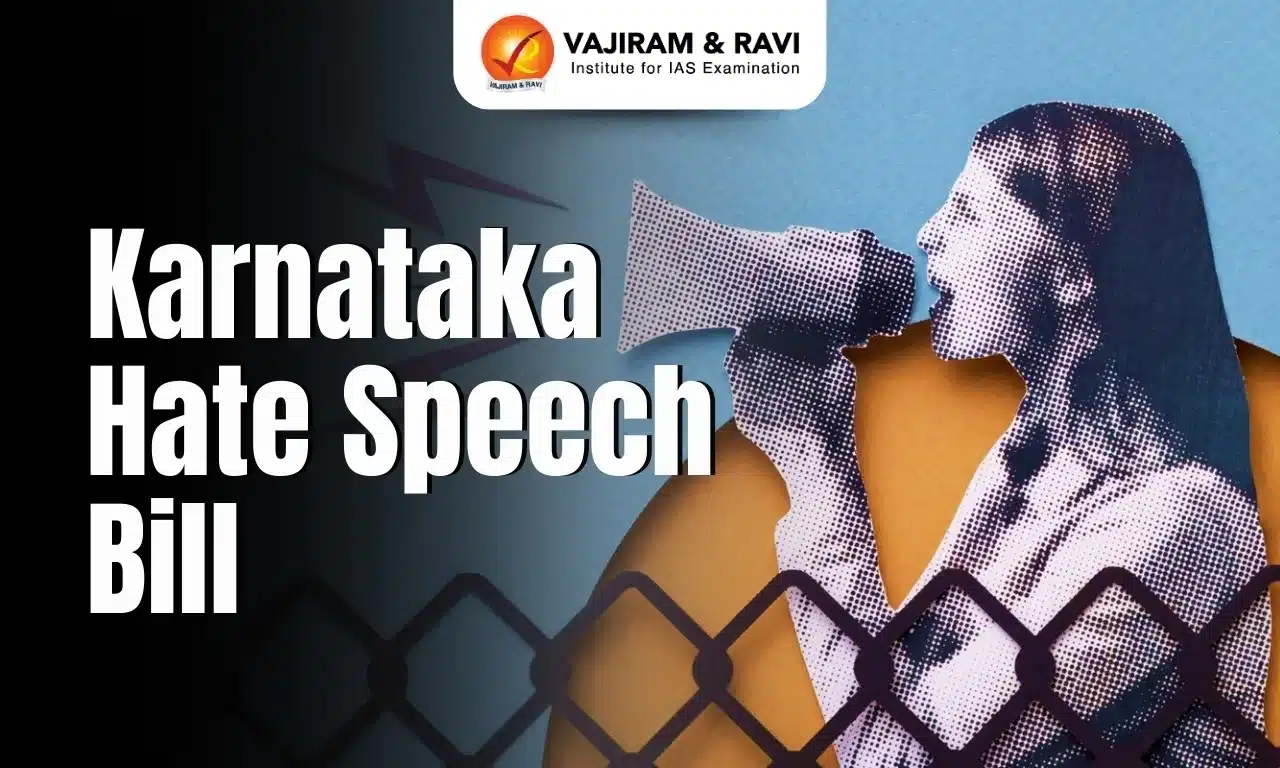What’s in today’s article?
- Why in News?
- Background of Dark Patterns
- How do dark patterns work?
- Examples of Dark Patterns
- How do dark patterns affect users?
- India’s Approach to manage dark patterns
Why in news?
- Countless popular websites and apps, from retailers and travel services to social media companies, make use of so-called “dark patterns,” or gently coercive design tactics that critics say are used to manipulate peoples’ digital behaviors.
Background of Dark Patterns
- The term “dark patterns” was coined by Harry Brignull, a U.K.-based user experience specialist and researcher of human-computer interactions.
- He used the term to describe the ways in which software can subtly trick users into doing things they didn’t mean to do.
- He has been working to catalogue such patterns and the companies using them since around 2010.
How do dark patterns work?
- Dark patterns refer to a user interface that has been crafted to trick or manipulate users into making choices that are detrimental to their interest.
- It is mostly prevalent while buying a product or service online.
- A consumer is tricked into buying a more expensive product, paying more than what was initially disclosed, sharing data or making choices based on false or paid-for reviews by deploying ‘dark patterns’.
Examples of Dark Patterns
- Social media companies and Big Tech firms such as Apple, Amazon, Skype, Facebook, LinkedIn, Microsoft, and Google use dark or deceptive patterns to downgrade the user experience to their advantage.
- To understand how dark patterns work, the following examples will be helpful –
- Amazon came under fire in the EU for its confusing, multi-step cancelling process in Amazon Prime subscription.
- After communicating with consumer regulators, Amazon this year made its cancellation process easier for online customers in European countries.
- LinkedIn users often receive unsolicited, sponsored messages from influencers.
- Disabling this option is a difficult process with multiple steps that requires users to be familiar with the platform controls.
- As Meta-owned Instagram pivots to video-based content to compete against TikTok, users have complained that they are being shown suggested posts they did not wish to see and that they were unable to permanently set preferences.
- Google-owned YouTube nags users to sign up for YouTube Premium with pop-ups, obscuring final seconds of a video with thumbnails of other videos — a way of disrupting what should have been an otherwise smooth user experience.
How do dark patterns affect users?
- Dark patterns endanger the experience of Internet users and make them more vulnerable to financial and data exploitation by Big Tech firms.
- Dark patterns confuse users, introduce online obstacles, make simple tasks time-consuming, have users sign up for unwanted services/products, and force them to pay more money or share more personal information than they intended.
- In the U.S., the Federal Trade Commission [FTC] has taken note of dark patterns and the risks they pose.
- In a report released in September this year, the regulatory body listed over 30 dark patterns, many of which are considered standard practice across social media platforms and e-commerce sites.
- These include “baseless” countdowns for online deals, conditions in fine print that add on to costs, making cancellation buttons hard to see or click, etc.
Way Ahead
- Dark and deceptive patterns don’t just stop with laptops and smartphones.
- The FTC report has warned that as augmented reality (AR) and virtual reality (VR) platforms and devices grow in usage, dark patterns will likely follow users to these new channels as well.
- Internet users who are able to identify and recognize dark patterns in their daily lives can choose more user-friendly platforms that will respect their right to choose and privacy.
India’s Approach to manage dark patterns
- Advertising Standards Council of India (ASCI), a self-regulatory body of the advertising industry in India, recently said that it wants to expand its code to address concerns around ‘dark patterns’ in digital advertising.
- ASCI said nearly a third of advertisements it processed in FY22, were disguised by influencers as regular content, which is also a part of dark patterns in advertising.
- The ASCI has formed a task-force to look into the issue.
Q1) What is another name for dark pattern?
Dark patterns are also called Deceptive design patterns. The term “dark patterns” was first coined by UX specialist Harry Brignull.
Q2) What is difference between augmented reality (AR) and virtual reality (VR)?
AR uses a real-world setting while VR is completely virtual. AR users can control their presence in the real world; VR users are controlled by the system.
Source: ‘Dark patterns’ manipulating customers in digital advertising, says self-regulatory body | Wired | WION
Last updated on November, 2025
→ Check out the latest UPSC Syllabus 2026 here.
→ Join Vajiram & Ravi’s Interview Guidance Programme for expert help to crack your final UPSC stage.
→ UPSC Mains Result 2025 is now out.
→ UPSC Notification 2026 is scheduled to be released on January 14, 2026.
→ UPSC Calendar 2026 is released on 15th May, 2025.
→ The UPSC Vacancy 2025 were released 1129, out of which 979 were for UPSC CSE and remaining 150 are for UPSC IFoS.
→ UPSC Prelims 2026 will be conducted on 24th May, 2026 & UPSC Mains 2026 will be conducted on 21st August 2026.
→ The UPSC Selection Process is of 3 stages-Prelims, Mains and Interview.
→ UPSC Result 2024 is released with latest UPSC Marksheet 2024. Check Now!
→ UPSC Prelims Result 2025 is out now for the CSE held on 25 May 2025.
→ UPSC Toppers List 2024 is released now. Shakti Dubey is UPSC AIR 1 2024 Topper.
→ UPSC Prelims Question Paper 2025 and Unofficial Prelims Answer Key 2025 are available now.
→ UPSC Mains Question Paper 2025 is out for Essay, GS 1, 2, 3 & GS 4.
→ UPSC Mains Indian Language Question Paper 2025 is now out.
→ UPSC Mains Optional Question Paper 2025 is now out.
→ Also check Best IAS Coaching in Delhi

















